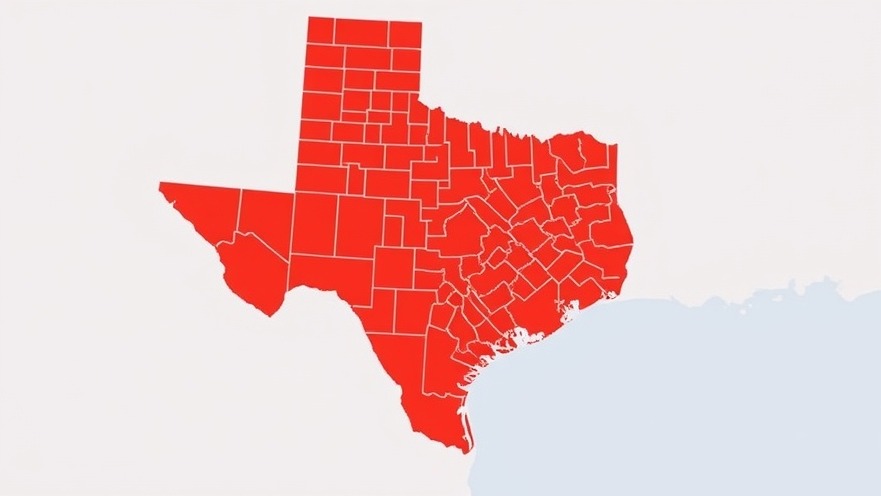
Texas Republicans Roll Out Controversial Congressional Map
The battle lines are drawn as Texas Republicans unveil a newly proposed congressional map that alters the landscape of political representation for the state's Democrats. This redistricting effort has sparked significant concern among party leaders and constituents alike as it aims to create Republican-leaning districts in areas such as Central Texas, Dallas, and Houston, while consolidating Democratic incumbents into competitive districts.
Implications for Democratic Incumbents
This drastic change comes with the potential for infighting among Democrats, as numerous incumbents may find themselves in direct competition for fewer available seats. For instance, in Austin, progressive Congressman Lloyd Doggett and newcomer Greg Casar have both been placed in the same district, highlighting the generational divide within the party. Doggett, a seasoned representative, and Casar, a fresh face in Texas politics, could face off in a heated primary battle, making the race a focal point of Democratic tension between experience and youth.
A Closer Look at the Dallas-Fort Worth Area
In North Texas, the situation is similarly fraught. Democratic incumbents like Rep. Jasmine Crockett must navigate a restructured political landscape, with some districts becoming bright red and others undergoing significant shifts. Rep. Julie Johnson, for example, now finds herself in a much less favorable district, as her previous supporters are absorbed into her Republican colleagues' territories. This redistricting pushes Democrats to make hard choices about their political futures.
The Historical Context of Redistricting in Texas
Redistricting has long been a tool for political maneuvering in Texas. Historically, maps have been drawn to maximize party advantage, often resulting in contentious disputes and allegations of gerrymandering. This new map proposed by Texas Republicans highlights how redistricting continues to be a strategic weapon that can reshape the bargaining power of incumbents and influence elections for years to come.
The Impact of the Vacant 18th Congressional District
Adding to the complexity of the situation, the 18th Congressional District in Houston has been left vacant following the loss of its respected representative, Sheila Jackson Lee. This seat has significant historical value as it was the first to elect a Black woman to Congress. With the upcoming special election and ongoing redistricting efforts, the future of this district is uncertain. Representing this historically important seat complicates the decision-making process for Democratic candidates.
Democratic Pushback Against the Proposed Map
The response from Democratic leaders and activists has been robust. Texas Democrats are organizing efforts to contest the proposed map, describing it not only as an affront to fair representation but also as potentially racially biased. They are mobilizing constituents and appealing to donors, emphasizing the need to challenge this new configuration.
Legal Challenges Looming Ahead
If implemented, the proposed map is expected to face significant legal scrutiny. Previous redistricting plans in Texas have been challenged successfully in court, leading to revisions based on electoral fairness and compliance with federal laws. As Democrats prepare for a fight, it remains to be seen how this latest map will be shaped by both political and legal battles.
Looking Ahead: The Stakes for 2026 Elections
As the stakes rise for the upcoming elections in 2026, the proposed congressional map represents more than geography; it symbolizes a significant moment for Texas Democrats. The shifting landscape calls into question the current balance of power and the ideological direction of the party in the state. What happens next could redefine electoral strategies and shape the political climate in Texas for years to come.
Conclusion on Texas Redistricting
Texas redistricting is a dynamic and contentious process that affects not just representatives, but the voices and interests of their constituents. These shifting maps illustrate the perennial struggle within the democratic process and the necessity for vigilance and advocacy in maintaining fair representation. As the story unfolds, Texans will undoubtedly remain engaged as they witness the ongoing evolution of their state's political landscape.
 Add Element
Add Element  Add Row
Add Row 



Write A Comment